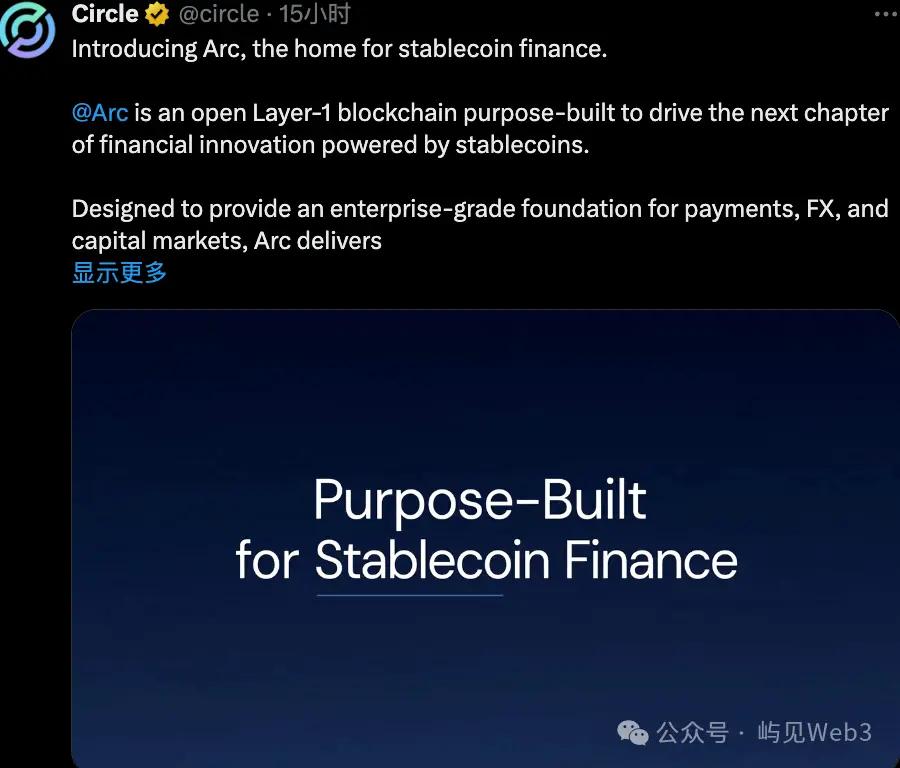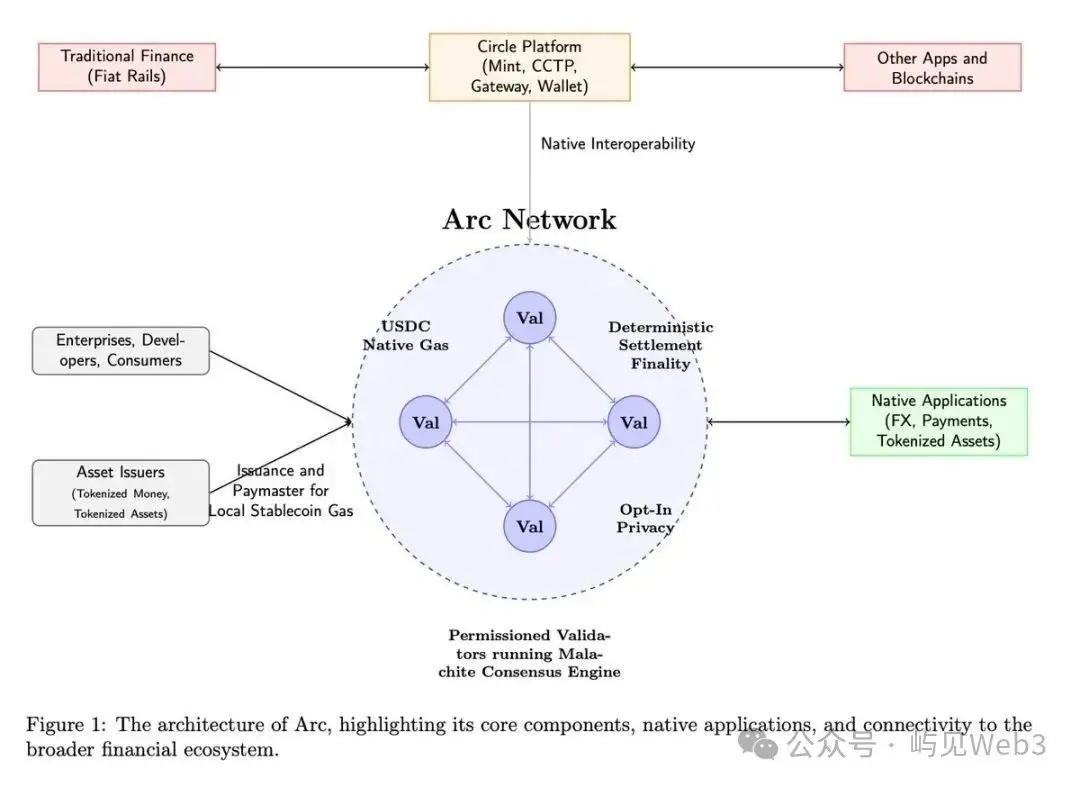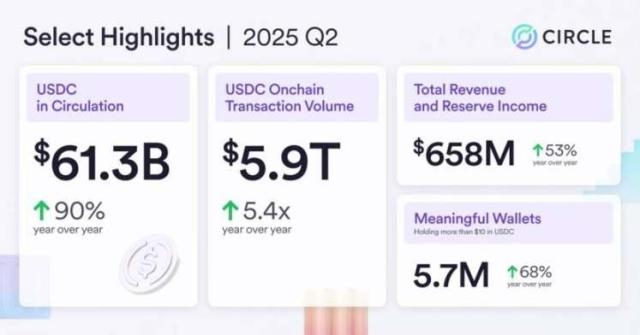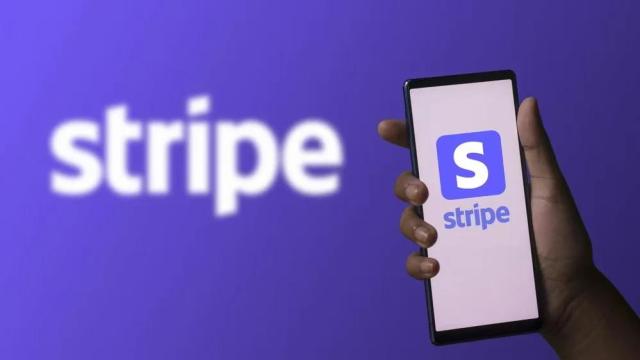Author: David, TechFlow
Translated by: @mangojay09, Web3 Observer
On August 12th, on the same day as its first post-IPO financial report, Circle dropped a bombshell: @arc, an L1 blockchain specifically built for stablecoin finance.

If you only look at the news headline, you might think this is just another public chain story.
But when you interpret it within Circle's trajectory over the past seven years, you'll discover:
This is not just a public chain, but a territorial declaration about a "digital central bank".
Traditionally, central banks have three key functions: issuing currency, managing payment clearing systems, and formulating monetary policies.
Circle is gradually completing a digital replication—first securing the "minting rights" with USDC, then building a clearing system with Arc, and next, perhaps defining digital currency policies.
This is not just about one company, but about the redistribution of monetary power in the digital era. [The rest of the translation follows the same approach, maintaining the specified translations and preserving the original structure.]
Arc's design is filled with "central bank thinking":
First, as a monetary policy tool, USDC serves as the native gas, giving Circle the ability to regulate similar to a "benchmark interest rate"; second, clearing monopoly, with a built-in institutional-level RFQ foreign exchange engine that mandates all on-chain forex settlements through its mechanism; lastly, rule-making power, with Circle retaining control over protocol upgrades, deciding which functions go online and which behaviors are permitted.

The most challenging part is ecosystem migration - how to convince users and developers to leave Ethereum?
Circle's answer is not migration, but supplementation. Arc is not meant to replace USDC on Ethereum, but to provide solutions for use cases that existing public chains cannot satisfy. For instance, enterprise payments requiring privacy, forex transactions needing instant settlement, and on-chain applications requiring predictable costs.
This is a bold bet. If successful, Circle could become the "Federal Reserve" of digital finance; if it fails, billions of dollars invested might go to waste.
PayPal's approach is pragmatic and flexible.
In 2023, PYUSD was first launched on Ethereum, expanded to Solana in 2024, went live on the Stellar network in 2025, and recently covered Arbitrum.
PayPal hasn't built a dedicated public chain, but instead flexibly deployed PYUSD across multiple usable ecosystems, with each chain serving as a distribution channel.
In the early stages of stablecoins, distribution channels are indeed more important than building infrastructure. When ready-to-use options exist, why build your own?
Capture user mindshare and use cases first, and consider infrastructure later, especially since PayPal has a merchant network of 20 million.
Tether is like the de facto "shadow central bank" of the crypto world.
It barely intervenes in USDT's usage, releasing it like cash, with circulation determined by the market. Especially in regions with unclear regulation and difficult KYC, USDT becomes the only choice.
Circle founder Paolo Ardoino once stated in an interview thatUSDT primarily serves emerging markets (such as Latin America, Africa, Southeast Asia), helping local users bypass inefficient financial infrastructure, more like an international stablecoin.
With trading pair numbers 3-5 times that of USDC on most exchanges, Tether has formed a powerful liquidity network effect.
Most interestingly, Tether's attitude towards new chains is to not actively build, but support others' building. For example, supporting stablecoin-specific chains like Plasma and Stable. It's like placing bets, maintaining a presence in various ecosystems at minimal cost, waiting to see which one emerges.
In 2024, Tether's profits exceeded $10 billion, surpassing many traditional banks; instead of building its own chain, it continued buying government bonds and Bitcoin.
Tether is betting that as long as it maintains sufficient reserves and avoids systemic risks, inertia will maintain USDT's dominant position in stablecoin circulation.
These three models represent different perspectives on the future of stablecoins.
PayPal believes inuser supremacy. With 20 million merchants, technical architecture is secondary. This isinternet thinking.
Tether believes inliquidity supremacy. As long as USDT remains the basic trading currency, nothing else matters. This isexchange thinking.
Circle believes ininfrastructure supremacy. Control the track, and you control the future. This iscentral bank thinking.
The reason for this choice might be in Circle CEO Jeremy Allaire's congressional testimony: "The dollar is at a crossroads, and monetary competition is now a technological competition."
Circle sees more than just the stablecoin market, but the standard-setting rights for digital dollars. If Arc succeeds, it could become the "Federal Reserve System" for digital dollars. This vision is worth the risk.
2026: Critical Time Window
The time window is narrowing. With regulation advancing and competition intensifying, when Circle announced Arc's mainnet launch in 2026, the crypto community's first reaction was:
Too slow.
In an industry that believes in "rapid iteration", taking nearly a year to move from testnet to mainnet seems like a missed opportunity.
But if you understand Circle's situation, this timing isn't bad.
On June 17th, the US Senate passed the GENIUS Act. This is the first federal-level stablecoin regulatory framework in the United States.
For Circle, this is a long-awaited "legitimization". As the most compliant stablecoin issuer, Circle has almost met all the requirements of the GENIUS Act.
In 2026, it will be the perfect time for these details to take effect and for the market to adapt to new rules. Circle doesn't want to be the first to take risks, but also doesn't want to arrive too late.
Enterprise customers value certainty most, and Arc provides exactly that—certain regulatory status, certain technical performance, certain business model.
If Arc successfully launches and attracts sufficient users and liquidity, Circle will establish its leadership in stablecoin infrastructure. This could usher in a new era where a privately operated "central bank" becomes a reality.
If Arc performs poorly or is overtaken by competitors, Circle might have to rethink its positioning. Perhaps ultimately, stablecoin issuers can only be issuers, not infrastructure leaders.
But regardless of the outcome, Circle's attempt is pushing the entire industry to think about a fundamental question: In the digital age, who should control monetary power?
The answer to this question might become clearer by early 2026.






